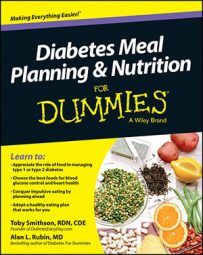You may be asking if there are low-calorie and low-carb snacks that you can incorporate in your diabetic-friendly diet. And, what about snacks that are more in the carbohydrate family — grains, fruit, starchy vegetables, or dairy?
There are options here, and in some cases carbohydrate snacks are a specific part of your meal plan. In other cases, where insulin or pills that can cause low blood glucose are part of your treatment plan, these snacks may come in handy when blood glucose needs a slight boost between meals or before bedtime.
For the most part, these snacks aren’t suitable for treating serious low blood glucose levels, where a quick response is preferred.
Low-carb snacks
Snacks without significant carbohydrate can help calm the appetite between meals, yet have no effect on blood glucose levels. A few recommendations for low-carbohydrate snacks are as follows:
One ounce, low-fat string cheese
A sugar-free popsicle
One or two ounces of jerky
One cup raw, nonstarchy vegetables
Water with a sugar-free drink mix added, or tea made by boiling cinnamon sticks
One tablespoon of peanut butter
Raw vegetables with salsa
Raw vegetables always offer the best deal on volume when trading for carbohydrates, calories, or fat. Cucumbers are particularly refreshing, but bell peppers, zucchini, green beans, carrots, or other choices may suit your tastes even better.
15-gram snacks
Snacks that offer 15 grams of carbohydrate — one carb choice — elevate blood glucose levels 30 to 45 milligrams per deciliter if necessary to head off mild hypoglycemia. For those wearing an insulin pump, carbohydrate snacks when blood glucose levels are normal can be offset with a bolus dose of insulin (a carbohydrate snack may not be worth an injection when low-carb snacks are just as satisfying).
A few lower calorie, 15-carbohydrate-gram snacks are as follows:
One cup berries or cubed melon
Six ounces no-sugar added ice cream, or sugar-free, no-fat yogurt
Three graham cracker halves
Three-quarter cup unsweetened cereal
One-half cup canned fruit (packed in juice)
Ten potato or tortilla chips (the baked kind)
A low-fat granola bar
Twelve small pretzels
One-half grapefruit or mango
One-half cup sugar-free pudding
Be sure to monitor the effect of snacks on your blood glucose levels — not everyone responds the same way to the same food.
30-gram snacks
In general, 30-carbohydrate-gram snacks will be worked into your meal plan in a balance with fewer carb choices at meals. Having one of these two-carb-choice snacks should require an insulin bolus for those with type 1 diabetes, because these snacks may raise blood glucose by 60 mg/dl or more. These snacks are not intended for treating hypoglycemia.
With type 2 diabetes these snacks can be matched to your medication to help spread carbohydrate consumption more evenly throughout the day. A few 30-carbohydrate-gram snacks would be the following:
One cup unsweetened cereal with one-half cup low-fat milk
One-half cup regular pudding
One-half bagel with low-fat cream cheese
Sixteen animal crackers
One-quarter cup dried fruit
One-half cup beans on a 6" tortilla

